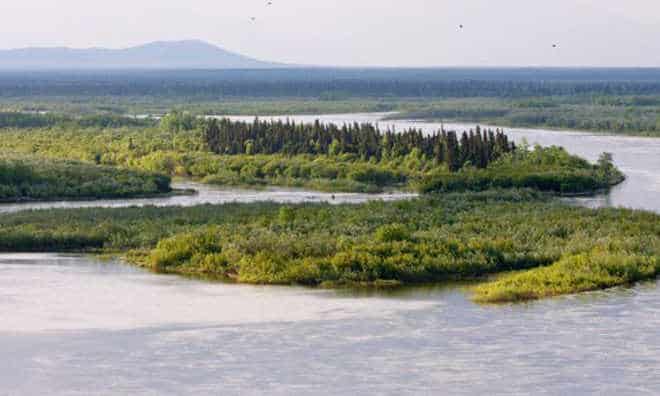Bristol Bay, which runs west along the Alaskan Peninsula, is the largest spawning ground for Alaskan salmon before they retreat upstream to lay their eggs, producing the next generation of salmon. The Bristol Bay area, according to the Natural Resources Defense Council (NRDC), is a pristine ecosystem, home to bears, whales, and seals, as well as a huge commercial fishing operation. In fact, according to the Commercial Fishermen for Bristol Bay, an advocacy group protecting the livelihoods of fishermen, the salmon industry in Bristol Bay brings in almost US$500 million in annual revenue for some 14,000 fisherfolk.
Currently, construction of a large-scale mine in Bristol Bay is being proposed by a group of large mining corporations. The proposed Pebble Mine would cover approximately 50 square kilometers (20 square miles) and measure 213 meters (700 feet) high, and would be used to mine copper, gold, and molybdenum; it would be the largest gold mine in the world. The mine would remove about 140 kilometers (87 miles) of natural salmon streams in the Bristol Bay area and introduce a massive amount of metal and acidic waste into the streams and lakes – approximately 9 billion metric tonnes (10 billion tons) or 1,360 kilograms (3,000 pounds) for every living person.
Loss of the salmon population would deplete an already-delicate population of harbor seals, who rely on the salmon for food, as well as threaten two Native American tribes, the Yup’ik and Dena’ina, two of the last salmon-dependent cultures in the world.
The U.S. Environmental Protection Agency (EPA) has conducted an analysis of the Bristol Bay watershed and potential impacts that mining would have on it, and has concluded that building the Pebble Mine would “significantly diminish” both the salmon population and natural habitat of a number of other species, and that should any mining accidents (the mine would, in fact, sit over a seismically active region) and toxic waste be released, the effects on Bristol Bay’s ecosystem would be “catastrophic.”
In February of this year, the NRDC took more than 100,000 petitions to Washington, D.C. in order to urge President Obama to issue the EPA analysis in final to protect Bristol Bay and the surrounding region under Section 404(c) of the Clean Water Act, which protects natural habitats and rivers imperative to fish spawning.















